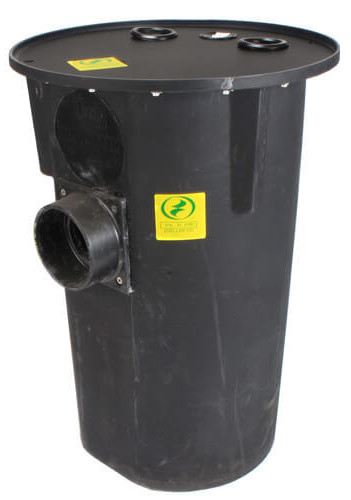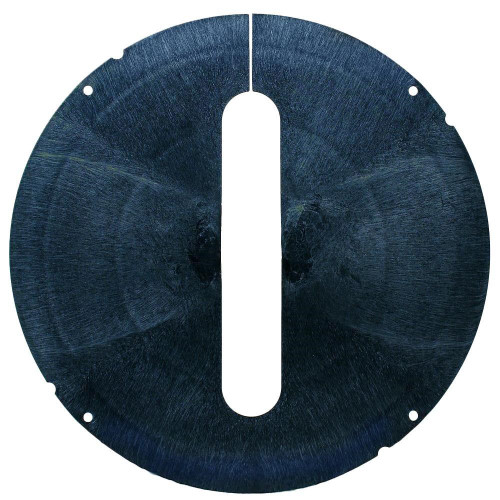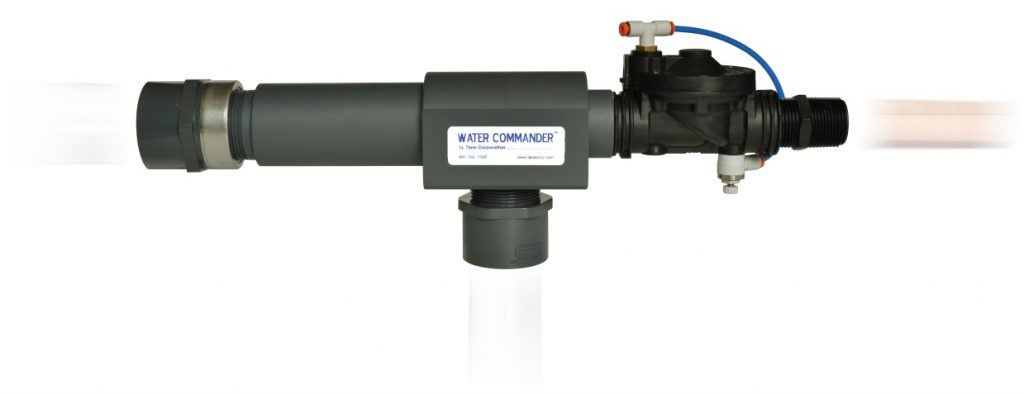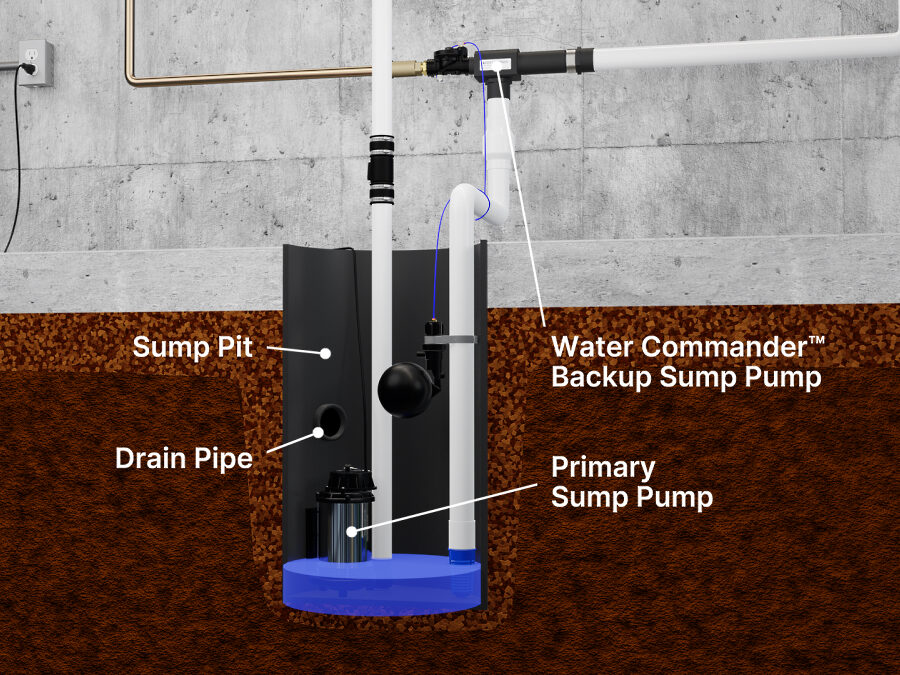Sump pits are an essential part of your home’s drainage system to protect your basement against water damage.
The sump pit (also known as sump, sump basin, or sump well) is a water collection hole in the floor of your basement or crawlspace. It is very common for homes in areas that get regular rain-fall or have high water tables. (Fun fact: Prior to the 15th century, “sump” meant marsh. It wasn’t until the 1650’s that the term referred to a “pit to collect water”.)
How Does It Work?
The sump is a crucial part of your home’s drainage system, keeping water out of your basement and protecting the integrity of your home’s foundation. As water accumulates along the foundation, the water flows into flexible, perforated drain pipes (called drain tiles) and is channeled into your sump pit. Some homes also have interior drain tiles that direct water from under the basement floor into the sump. This water then must be pumped outside by a sump pump.
Sump Pit Construction

Sump pits are made of a heavy-duty plastic or fiberglass, designed not to crack or warp over time. For homes with drain tiles, large holes on the side of the pit connect to the drain pipes. Where there is no drain tile, especially where there is a high water-table, an alternate sump pit design with multiple small perforations can be used. In this case, the sump is wrapped with a permeable filter fabric to keep dirt and small stones out.

For safety, sump pits should include a lid—either a one-piece design (with a slot or prefabricated holes) or split design to allow piping through the lid. Generally, you’ll need enough openings to allow pipes for the main electric sump pump, backup pump, and possibly radon mitigation. If you just have discharge pipes for your sump pumps, then a perfect seal is not necessary. However, if you also have a radon mitigation system, the lid must be more tightly sealed to prevent radon gas leakage.
Sump Pit Sizes
Most sump pits measure between 18” and 24” in diameter, with depths ranging between 22” and 36”. However, perforated pits designed for crawlspaces are generally smaller (see for example this 17” x 16” basin).
Some standard sizes available are listed below:
- 17” x 16” perforated for crawl spaces (Example: Jackel)
- 18” x 22” (Examples: Everbilt, Zoeller)
- 18” x 30” (Examples: Zoeller Simplex)
If you are sizing your current sump pit for a sump pump, it’s important to know how much water it holds. As a general rule of thumb, for sump pits that are 18” in diameter, each inch of water equals around 1 gallon. For a 24” pit, each inch equals roughly 2 gallons.
Emptying Water Out of Your Sump
In order to pump the sump water out of your home, you must have a sump pump. You need a (1) primary sump pump, and (2) an emergency backup sump pump for when the primary fails.
The primary pump does the heavy lifting throughout the year and is designed as your first line of defense against a flooded basement. You simply plug it in to the electrical outlet and make sure it’s setup properly (either inside the sump pit itself or outside depending on the design).
However, a backup sump pump is also essential to safeguard against flooding. Many homeowners find out the hard way how important a backup is when they lose power during a rainstorm and their primary pump no longer runs. (Read our article: Why You Need a Backup Sump Pump)

The most reliable backup sump pump system available is Water Commander™, a water-powered backup sump pump. Unlike battery backups that have a limited run time and require constant battery upkeep, Water Commander is powered by your home’s municipal water pressure. It can run at full power whenever you need it too without ever losing power. To see how it works, visit our How Does It Work? page or view the video below.
More Resources
Below are some additional resources online about sump pits:
Looking for a quality backup sump pump?
Water Commander™ is the best backup sump pump system available on the market today. It’s non-electric, can out-pump your electric sump pump, and will run at full power for years to come.
It is more reliable than battery backups and is the perfect solution for homes with municipal water.
Top Posts
- Water-Powered vs Battery Backup Sump Pumps
- How Long Does a Backup Sump Pump Battery Last?
- How Do Water-Powered Sump Pumps Work?
- How Much Water Does a Water-Powered Sump Pump Use?
- Why Independent Discharge for Your Backup Sump Pump Is Best
Recent Posts
- How To Measure Your Home’s Water Pressure
- Why Is My Sump Pump Not Working?
- How to Prevent Basement Flooding
- Battery Backup Sump Pump Troubleshooting Guide
- My Battery Backup Sump Pump Alarm Won’t Stop Beeping (Fixes)
Categories
Tag Cloud
Alarm Backup Sump Pump Batteries Basement Flooding Beeping Bernoulli Principle Best Sump Pump Check Valves Crawlspace Discharge Pipes Drain Tiles Ejector Jet Float Assembly Independent Discharge Municipal Water Perforated Sump Pits Power Outages Primary Sump Pump Failure Pros and Cons Pumping Charts Pumping Efficiency Pumping Rates Pump Life Span Pump Run Time Pump Testing Radon Gas Suction Pipe Sump Basin Sump Pump Motor Sump Pump Switch Troubleshooting Ultimate Guide Venturi Effect Water Drainage Systems Water Pressure Water Pressure Gauge Water Usage
